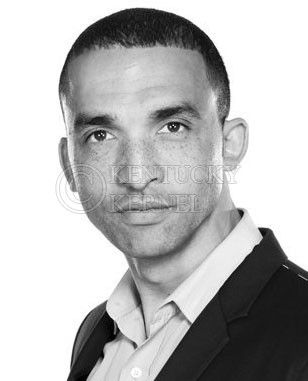Guiding Rupp Arena’s future a ‘dream’ for architect
September 18, 2011
Rupp Arena, one of the most esteemed stadiums in the nation, is going to be the center of a facelift that many hope will revitalize downtown Lexington, and the man in charge of designing it understands he’s in charge of a “legendary” task.
Recently, Gary Bates, a former UK faculty member, was selected by the Arena, Arts and Entertainment Task Force to be the master architect for the development of Lexington’s downtown entertainment district.
Bates, along with his architecture and design firm, Space Group, were selected by the 47-member task on Aug. 28.
“It’s a dream project for our company. It’s a unique project, not just in the United States, but in the world,” Bates said.
The task force, announced by Mayor Jim Gray in March 2011, consists of various leaders in the community. The main goal of the task force is to facilitate and implement an innovative plan that will improve the Lexington Convention Center and Rupp Arena and revitalize downtown Lexington.
A number of the members are UK administrators, faculty and alumni: Britt Brockman, Board of Trustees chairman; Mitch Barnhart, UK athletic director; Joe B. Hall, a former UK basketball coach; Sam Bowie, a former UK basketball player; and Jamal Mashburn, a former UK basketball player.
Related Link: Arena, Arts & Entertainment Task Force members
Michael Speaks, the dean of the College of Design and a member of the task force, is pleased with the committee’s selection.
“Space Group’s analysis and proposals were certainly the most penetrating and comprehensive,” Speaks said.
One important quality that separated the Norway-based firm from the other finalists was its knowledge about the city.
“Space Group also stood out among the four finalists as the most informed about Lexington and the University of Kentucky,” Speaks said.
The main reason for Space Group’s immense knowledge about the city and UK is Bates, who was a guest professor at the College of Design in 2008.
“Indeed, the committee was pleasantly surprised to find that though Space Group was the only international office among the finalists, they had the best local knowledge,” Speaks said.
During the time he was at UK, Bates headed a project where students created a strategic design proposal for Waterfront Park in Louisville.
He also served as the Brown-Forman Chair for the College of Design.
“Teaching at UK was one of the motivations for coming back,” Bates said. “The people were fantastic.”
Aside from his time at UK, Bates has other accomplishments. He graduated from Virginia Tech University in 1990, has worked on several international architectural projects (including Jussieu Library in Paris and Samsung Headquarters in Seoul), and was a guest professor at the University of Texas.
The master architect is currently in the process of devising different scenerios for the task force. In his preliminary presentation, Bates showed one of his alternate proposals that would expand Rupp Arena construct a new Lexington Convention Center, which he pointed out would be more economical.
When it comes down it, Bates just wants to create the best plan for the people of Lexington.
“We are curious about everything developing in the downtown area. We have to figure out physical and social components,” he said. “The main problems he says that he faces are with parking, infrastructure and traffic.”
Rupp Arena is the biggest venue made for the sole purpose of basketball in the country.
“There are 24,000 people dressed in blue, in one of the most densest arenas in the United States. Rupp is legendary — there’s no place else like it anywhere, and I’m going to fight to keep that experience no matter what decision is made,” Bates said.
Barnhart and Gray both said in statements made after the task force met with Bates on Sept. 7 that “all options are on the table” with concern to whether a new arena will be built or if Rupp will be revamped.
Rupp’s last renovation was in 2003 at the cost of $20 million.
“At this point we’re at the midpoint of the study phase,” Kevin Atkins, chief development officer for the city government, said.
Atkins said there are three phases to the project: reviewing existing conditions and studies of the facilities and property, figuring out plan alternatives and a final implementation plan.
“People also can’t forget that the project is not just about Rupp,” said Atkins, who is also on the committee for the Lexington Corporation. The corporation is made up of members interested in the city’s development and growth. According to project maps, the corporation owns 46 acres of real estate (including Rupp Arena and the Lexington Convention Center) in downtown Lexington that are being considered in the proposals.
Besides Rupp Arena, the areas being considered for the entertainment district range from the High, Jefferson and Cox Street parking lots to the Distillery District, old Opera House and Triangle Park area in front of the Lexington Convention Center.
One of the main goals Bates said he has for the project is to “bring the university closer to downtown,” which is in sync with the task force’s plans.
“A lively downtown area helps us attract students just as the place we play basketball at helps us attract top recruits,” Frank Butler, UK vice president for finance and administration, said. “Gary clearly understands architecture, but he also understands college basketball and Lexington.”
Related Link: Rupp Arena, Arts & Entertainment District website
































































































































































